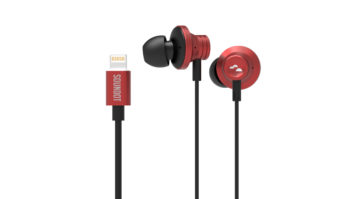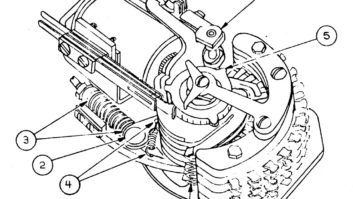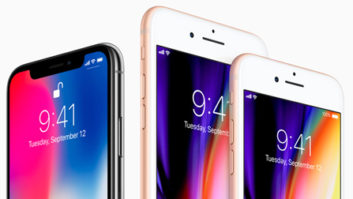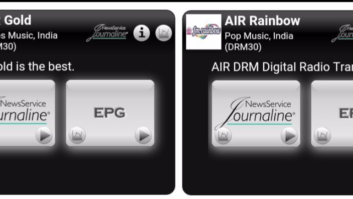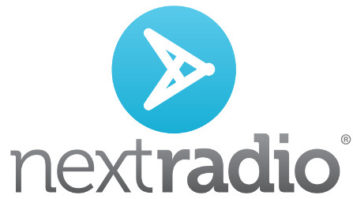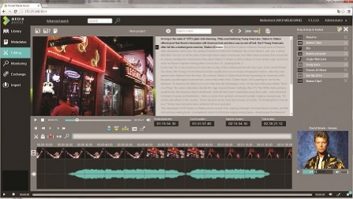The author is the chief technology officer at Clip Interactive.
In February, the National Association of Broadcasters and the Radio Advertising Bureau teamed up to lobby the FCC to encourage cell phone manufacturers and mobile service providers to activate the FM chip in all smartphones, allowing the broadcast radio signal to be transmitted directly through the mobile device.
With much of the industry supporting this initiative and mass advertising being utilized to inform the public, there are still misconceptions about what the FM chip is, what it is not and how it can be accessed.

Peter ShoebridgeFACTS
The FM chip is a piece of hardware installed in most smartphones manufactured in the last five years. The vast majority of devices do not have the chip connected in such a way for it to be functional (or easily made functional). However, a small number of device manufacturers, such as Samsung, HTC and LG, have enabled the FM chip so that it is accessible.
With the chip accessible in a small number of phones, some carriers like Sprint and AT&T have included the software layers that allow developers to access and activate the chip. Any app developer can access the FM chip to add the feature to a mobile app.
Listening through the FM chip is like having a small FM radio in your phone — it tunes local broadcast radio stations without having to use data. Conserving data has become an incentive for users to listen through the FM chip. However, this is becoming less of a concern, with unlimited data plans like those offered by Sprint. Currently, the FM chip is only available on about 35 Android devices, but the industry is working with more manufactures and providers to get the FM chip activated on all smartphones.
To access the FM chip in a smartphone, users only need a mobile app that acts like a radio tuner. Similar to physical radios, the FM chip in the smartphone can only access local radio stations within range. Also like a traditional radio, the FM chip in the smartphone needs an antenna to tune into the local broadcasts. Therefore, users must either plug in headphones or an auxiliary cord to act as the antenna.
Because the FM chip does not require Wi-Fi or data to listen to the broadcast, it can also be a source of information for the public in emergency situations including weather alerts, amber alerts or announcements of other major catastrophes.
FALLACIES
Many radio managers think that the FM chip is something that the carriers activate or even an app that listeners can download. In fact, the app is simply the tuner that accesses FM transmission from the chip. No one app or one radio company owns the FM chip technology.
Certain companies have been seeking the support of broadcasters to facilitate the distribution of their app; however they are only one of many companies that can access the FM chip. The radio industry should evaluate all FM chip-supported offerings and decide for themselves which is their best option.
Mobile broadcast listening through the FM chip cannot access out-of-market stations. Many radio station apps offer the ability to stream station feeds from all across the country, but the FM chip is limited to stations that are within the broadcast range. Listening is also restricted with the FM chip when users are in remote areas.
Last, broadcast listening on mobile devices through the FM chip is not yet widely adopted. To this day, only a very small percentage of radio’s total listening audience utilizes mobile broadcast listening. With other options for listening, including mobile and online streaming, the majority of radio listeners (97 percent) still choose the traditional broadcast through a physical radio either at home, at work or in the car.
SIGNIFICANCE
FM chip activation is important for a few key reasons:
• Emergency Situations: FM chip-enabled smartphones can play an important role during emergencies when other communication networks get overwhelmed or fail.
• Data Usage Concerns: As discussed, FM chip listening does not consume any of a user’s data. In recent years, more people have become concerned with data usage on their phone and additional charges as a result of overages. However, as data becomes more affordable, this is becoming less of a concern (e.g., Sprint and T-Mobile’s unlimited bandwidth for data).
• Reaching Radio’s Total Listening Audience: FM chip-enabled apps offer listeners another way to tune into and interact with their favorite radio station. However, in this digital advertising age perhaps more important than tuning is interacting with radio’s content. In the past few years, radio has seen a decline in advertising as a result of new digital advertising options cutting into its revenue. Because of this increasingly competitive landscape, it is more important than ever to offer radio listening and interaction to consumers in the way that they most prefer.
FM chip integration is one more step in offering users more ways to listen to and interact with the great content that is being provided by radio stations. In fact, Clip Interactive acknowledges this as a trend and recently added FM chip listening to all of our radio station apps, which gives listeners the option of listening to the broadcast through either the stream or the FM chip. We look forward to seeing how many people utilize this new way of listening to local stations.
Peter Shoebridge has 30 years in software development and has been involved with Internet technologies since 1996. He was CEO/co-founder of Blue Yonder Gaming Corp., a casino gaming systems and gaming company, which was acquired in 2012; he was vice president of engineering at Sona Mobile Inc. and led the team that built the first wireless gaming system to receive regulatory approval, as well as the team that built the server-based Sona Gaming System.
Comment on this or any story. Write to [email protected]with “Letter to the Editor in the subject line.





